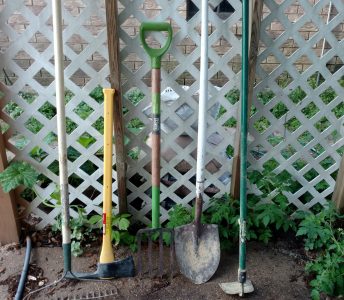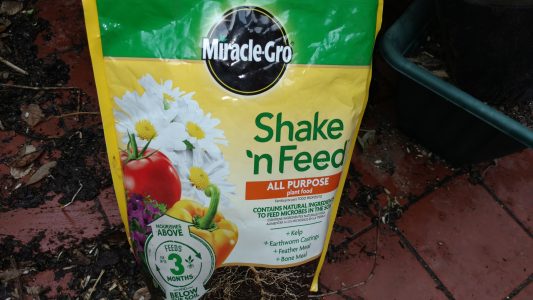
You Can Do A Lot With A Little.
It doesn’t take much to get started. Firstly, we need just a few basic hand tools and lots of back and elbow grease. What do we need? A garden fork to turn and break up the soil; a shovel to move the soil around; a mattocks to dislodge rocks and cut through roots; a rake to classify and remove unwanted debris and level the beds; and a hoe to cultivate the rows and/or make furrows. We’ll also need some stakes, string, a tape measure and a hammer to mark the corners of your garden and lay out the rows. For some great tips on getting started this spring please take a few minutes and watch this video: Getting Started in Your Garden — In the Alaska Garden with Heidi Rader.

Essential Gardening Supplies.
On our list we should include a good fertilizer. And by good I don’t just mean a 10-10-10 consisting of NPK, but fertilizer(s) which include macronutrients, micronutrients and trace minerals. This is especially true when the soil is poor. Compost is both a great fertilizer and soil conditioner, so do add some compost to your soil mix, too. Another factor which should not be overlooked is soil pH. A pH test is something we all need to do from time to time, because the uptake of nutrients will be increasingly curtailed the farther out of balance is our soil pH. In other words, plants are like people, because plants need to maintain a proper pH so they can process essential minerals. If the soil pH is too high, add sulfur. If too low, add Lime.
The following is the list of essential nutrients needed for your garden:
- Macronutrients: nitrogen (N), phosphorus (P), potassium (K), calcium (Ca), sulfur (S), magnesium (Mg), carbon (C), oxygen (O), hydrogen (H)
- The micronutrients and trace minerals: iron (Fe), boron (B), chlorine (Cl), manganese (Mn), zinc (Zn), copper (Cu), molybdenum (Mo), nickel (N)
Don’t get intimidated by the above list. The plants will naturally get carbon, oxygen and hydrogen from air and water. Most everything else on the above list can be purchased for a reasonable price at your local garden center or ordered online. You can take a soil sample and send it in to have it professionally tested to find out about your pH and what amendments your soil needs. It’s not too difficult or expensive to do so: how to do a soil test.
Finally, we need a garden hose with a sprinkler head. And a wheelbarrow would probably come in handy for a large garden. Lastly, a notebook and a pencil to draw a rough sketch of your garden and to make notes on when and what you planted.
There’s more, of course, (for example, you might want to build a fence to protect your garden) but the above items are all of the basic things necessary to start a garden. Choosing the right seeds and starts is a topic that I covered here: “Planning Your Garden”.
About ggphillips
Twitter •
Useful Content. Thanks a lot for the info!
It’s interesting that you can test your soil for its benefits. My aunt stated to me last night that she is looking for calcium-rich soil for her garden, and she asked if I could advise her on the best course of action. I’ll make sure to tell her that we may consult the garden supply shop because they can answer all of our questions, thanks to this useful article.